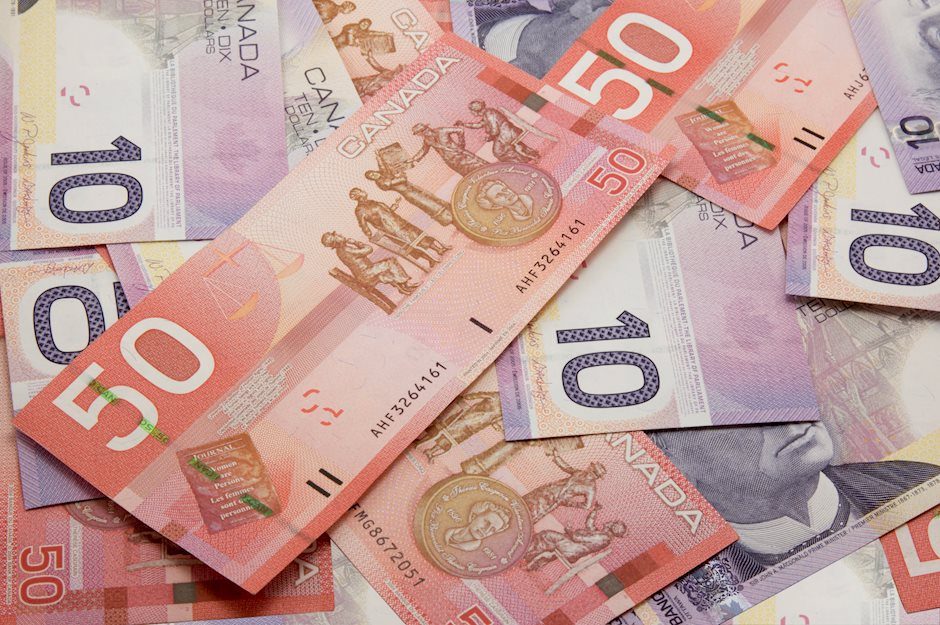USD/CAD moves above 1.3800, maintains position near 14-week highs
- USD/CAD extends its winning streak to 14-week highs on Thursday.
- The Canadian Dollar declined as the BoC reduced rates by 25 basis points to 4.5% on Wednesday’s meeting.
- The US Dollar may appreciate as recent US PMI data allows the Fed to maintain its restrictive policy.

USD/CAD continues its winning streak that began on July 17, trading around 1.3820, reaching 14-week highs during the European session on Thursday. The Canadian Dollar (CAD) faced challenges as the Bank of Canada (BoC) lowered interest rates by 25 basis points to 4.5% for the second consecutive meeting on Wednesday, citing progress in reducing inflation.
BoC members emphasized that excess supply and a cooling labor market justified their decision to cut rates, aiming to stabilize consumer prices at 2% by 2025. The reduced borrowing conditions are anticipated to alleviate inflationary pressures by lowering mortgage rates and housing costs.
Additionally, the lower crude Oil prices put pressure on the Loonie Dollar as Canada is the biggest crude exporter to the United States (US). West Texas Intermediate (WTI) Oil price continues to decline for the sixth successive session, trading around $77.00 per barrel during the European hours on Thursday. Crude Oil prices are under pressure due to negative sentiment in global stock markets affecting risk assets.
Moreover, Sluggish economic activity in China, the largest crude importer, has added further downward pressure on Oil prices. China's Q2 growth was 4.7%, the weakest increase since early 2023. A surge of optimism surrounding potential ceasefire negotiations between Israel and Hamas has eased the threat of supply disruption, which weakens the prices of black Gold. Israeli Prime Minister Benjamin Netanyahu has hinted that a ceasefire agreement
The US Dollar might strengthen following recent PMI data indicating a quicker expansion in private-sector activity for July, which rose to 55.0 reading from the previous 54.8 reading. This has marked the highest reading since April 2022 and indicates sustained growth over the past 18 months. This data provides the Federal Reserve (Fed) with more flexibility to maintain its restrictive policy stance if inflation remains persistent.
Traders await the US Gross Domestic Product (GDP) Annualized (Q2) data on Thursday and the Personal Consumption Expenditures (PCE) inflation data on Friday. These reports are anticipated to offer fresh insights into the economic conditions in the United States.
Canadian Dollar FAQs
The key factors driving the Canadian Dollar (CAD) are the level of interest rates set by the Bank of Canada (BoC), the price of Oil, Canada’s largest export, the health of its economy, inflation and the Trade Balance, which is the difference between the value of Canada’s exports versus its imports. Other factors include market sentiment – whether investors are taking on more risky assets (risk-on) or seeking safe-havens (risk-off) – with risk-on being CAD-positive. As its largest trading partner, the health of the US economy is also a key factor influencing the Canadian Dollar.
The Bank of Canada (BoC) has a significant influence on the Canadian Dollar by setting the level of interest rates that banks can lend to one another. This influences the level of interest rates for everyone. The main goal of the BoC is to maintain inflation at 1-3% by adjusting interest rates up or down. Relatively higher interest rates tend to be positive for the CAD. The Bank of Canada can also use quantitative easing and tightening to influence credit conditions, with the former CAD-negative and the latter CAD-positive.
The price of Oil is a key factor impacting the value of the Canadian Dollar. Petroleum is Canada’s biggest export, so Oil price tends to have an immediate impact on the CAD value. Generally, if Oil price rises CAD also goes up, as aggregate demand for the currency increases. The opposite is the case if the price of Oil falls. Higher Oil prices also tend to result in a greater likelihood of a positive Trade Balance, which is also supportive of the CAD.
While inflation had always traditionally been thought of as a negative factor for a currency since it lowers the value of money, the opposite has actually been the case in modern times with the relaxation of cross-border capital controls. Higher inflation tends to lead central banks to put up interest rates which attracts more capital inflows from global investors seeking a lucrative place to keep their money. This increases demand for the local currency, which in Canada’s case is the Canadian Dollar.
Macroeconomic data releases gauge the health of the economy and can have an impact on the Canadian Dollar. Indicators such as GDP, Manufacturing and Services PMIs, employment, and consumer sentiment surveys can all influence the direction of the CAD. A strong economy is good for the Canadian Dollar. Not only does it attract more foreign investment but it may encourage the Bank of Canada to put up interest rates, leading to a stronger currency. If economic data is weak, however, the CAD is likely to fall.
Author

Akhtar Faruqui
FXStreet
Akhtar Faruqui is a Forex Analyst based in New Delhi, India. With a keen eye for market trends and a passion for dissecting complex financial dynamics, he is dedicated to delivering accurate and insightful Forex news and analysis.

















